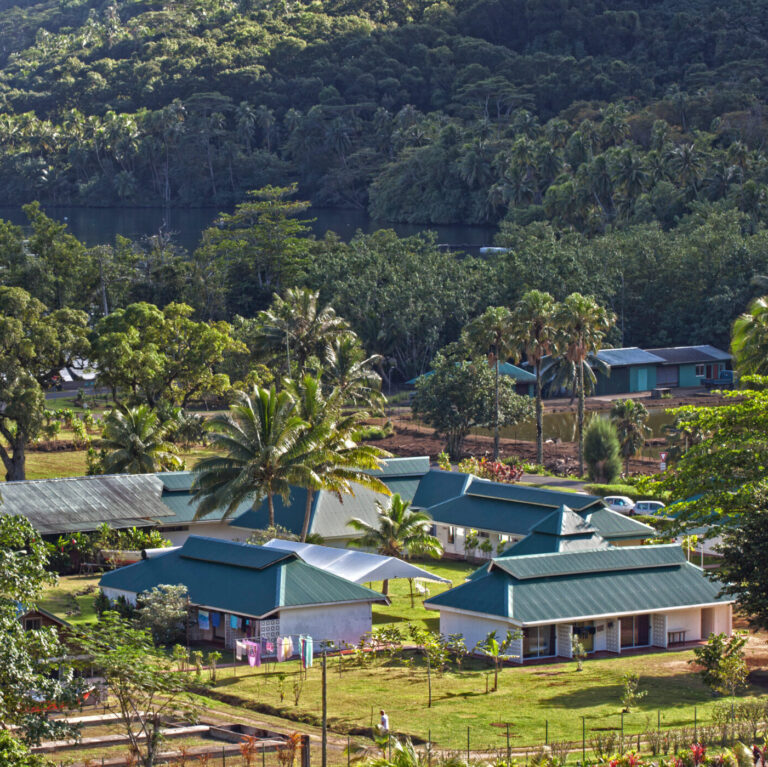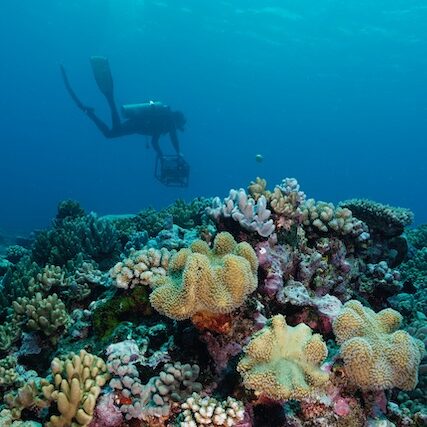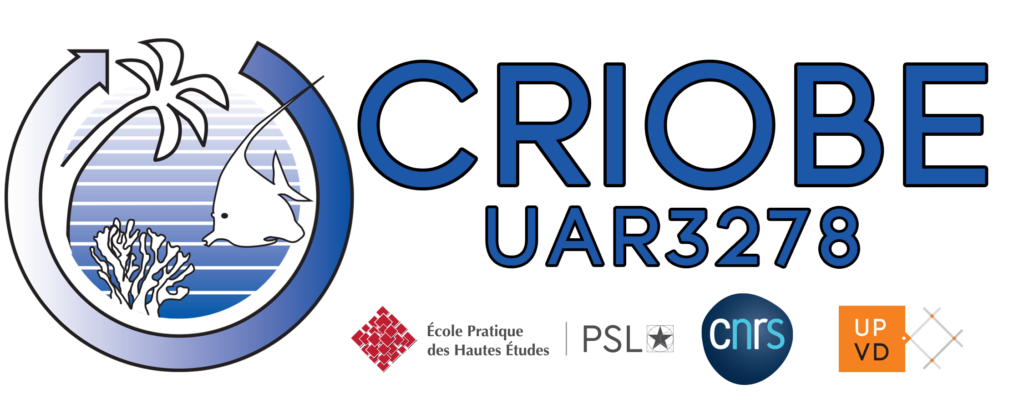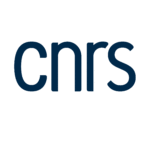Access to the station
Find all the information you need to plan your itinerary. Feel free to contact us if you need more information.
- Flights to Tahiti
- Tahiti-Moorea Ferries
- Transfers to/from CRIOBE
Tahiti is readily accessible from California, Hawaii, New Zealand, Chile, New Caledonia, and Japan. Direct, non-stop flight times are about 8 hours from Los Angeles or San Francisco, 5 hours from Auckland or Honolulu, and 12 hours from Tokyo.
Papeete (PPT) Tahiti is served by several international airlines including Air Tahiti Nui, Air France (LAX), French Bee (SFO), Air New Zealand, Hawaiian (HNL), United (SFO partial), Air Calin, and Lan Chile, and starting in 2018 United Airlines and France Bee (both to SFO).
Depending on when you arrive in Tahiti, you may be able to take a ferry to Moorea (see next tab) that same day. Otherwise, you will need to spend the night on Tahiti.
Getting from the Tahiti International Airport to Moorea will depend on your arrival time because the ferries do not go at night.
Ferries between Tahiti and Moorea
Daytime arrivals:
Arrange for land transfers and/or ferry tickets when you purchase your airline tickets. You have several options:
- The tour busses parked in front of the terminal will take you to the ferry dock in Papeete.
- Take a taxi from the stand in front of the airport.
- Take the bus, which stops on the road above the airport. You must walk through the parking lot and up the stairs to the road, then cross the road to wait for the bus to Papeete. The final destination is in the center of Papeete, not at the ferry dock. You will need to walk about 1 km.
Nighttime arrivals:
- There are no ferries at night, so you will need to spend the night on Tahiti.
- Check the ferry schedules for departure times.
There are 3 ferry companies serving Moorea:
- Aremiti (tickets valid on either Aremiti 6 or Aremiti Ferry)
- Terevau
- Terevau Piti
Tickets can be purchased at the kiosk prior to boarding. If you are a group or a regular, consider buying the pack of 10 tickets (carnet) for better price.
Aremiti 6 and Terevau take about 30mins. The other two are larger ferries taking ~45mins.
Users should make arrangements with CRIOBE staff prior to arrival if they require help with a transfer. The Vaiare ferry terminal on Moorea is about a 30-minute drive from the CRIOBE Station. Most ferries are met by taxis and the municipal bus. The buses are inexpensive though may charge a little extra for big pieces of luggage. Get off at the milestone mark: pk 18 km, at the very end (South) of the Opunohu Bay (see map).
Here are the steps you will need to complete before you arrive in French Polynesia. These procedures can take time so please contact us well head of your arrival.

- Use the Station
- Immigration
- Sampling biodiversity
- SCUBA Regulations
There are two steps for applying to use the CRIOBE Station and making reservations:
- Applications: Application forms must be completed by the project/class leader before they or any members of their group can make a reservation.
- Reservations: Having a reservation at the CRIOBE Station does not give users the right to carry out any activities covered by local, national, or international regulations (see “Sampling biodiversity” tab).
Individual-level authorizations depend on your personal situation and include permission to enter the country for research/teaching purposes (“convention d’accueil”), visas, and work permits. It is up to each person to determine what documentation they need to come to French Polynesia based on their individual status (e.g., nationality) and the activity they wish to carry out.
Stays shorter than 90 days
Researchers and instructors, if non-EU citizens, will need the convention d’accueil, a French government form authorizing entry of non-EU citizens into French Polynesia for the purposes of research and university-level teaching.
Non-French researchers and instructors (including EU citizens) will also need a Work Permit (Carte de Travail). Students generally do not need a Work Permit.
Required documents
- EU citizens: Only a valid EU passport is required. There are no visa requirements for citizens of the European Union, but non-French citizens who stay longer than 90 days should register with the municipality (Commune) where they live.
- US citizens: Under the visa waiver scheme, American citizens conducting research or teaching classes are allowed to stay in French Polynesia for up to “90 days in any 180 day period” without a visa so long as they have a valid convention d’accueil. The 180 days is a moving window counting back from the date you are in FP. You can enter and leave FP, but the cumulative time you are in FP (inclusive of arrival and departure days) must not exceed 90 days in the previous 180 days.
- See Short Stay Schengen guide and Calculator (which enables you to see if you could be in FP on a given date without breaching the rules). If you are likely to be close to this limit, it is recommended that you apply for a Scientific long-stay Visa / Carte de Séjour (see section below).
- Other nationalities: Please check with your nearest French embassy or consulate to see whether your country participates in French Polynesia’s visa waiver scheme, and if so how long you are able to come without a visa.
Stays longer than 90 days
If you need a visa / Carte de Séjour, it is best to begin this process 3-4 months in advance. Visas /Carte de Séjour are likely needed if you are a
- citizen of a country participating in France / EU visa waiver program (e.g., USA) staying longer than 90 days in a 180 day window, or a
- citizen of a country not participating in France / EU visa waiver program for any length of stay
In order to apply for the Carte de Séjour at your nearest French Consulate, you must first obtain the Convention d’Accueil. The consulate might need the original Convention d’accueil, so be sure to apply early enough (2 months).
Local, national, and international regulations regulate both the collection and the exportation of biodiversity. Authorizations may be required if your project involves sampling (access) of biodiversity, depending on how or where the sampling is done.
Please contact us well in advance, as obtaining necessary authorizations can take a long time
Diving is strictly regulated and use of CRIOBE Station equipment and related facilities for SCUBA is only allowed for scientific purposes.
Anyone wanting to dive while based at the CRIOBE Station must obtain clearance from the Station’s Diving Safety Officer, Guillaume Iwankow. This clearance can be obtained after arrival at the CRIOBE Station, but please make sure that you have sufficient physical and technical capabilities before.
Larger groups should also contact the Station beforehand to ensure that sufficient tanks and lead are available.

- Information and reservations of research facilities: station.criobe@services.cnrs.fr
- General information and housing reservation: criobe@mail.pf




